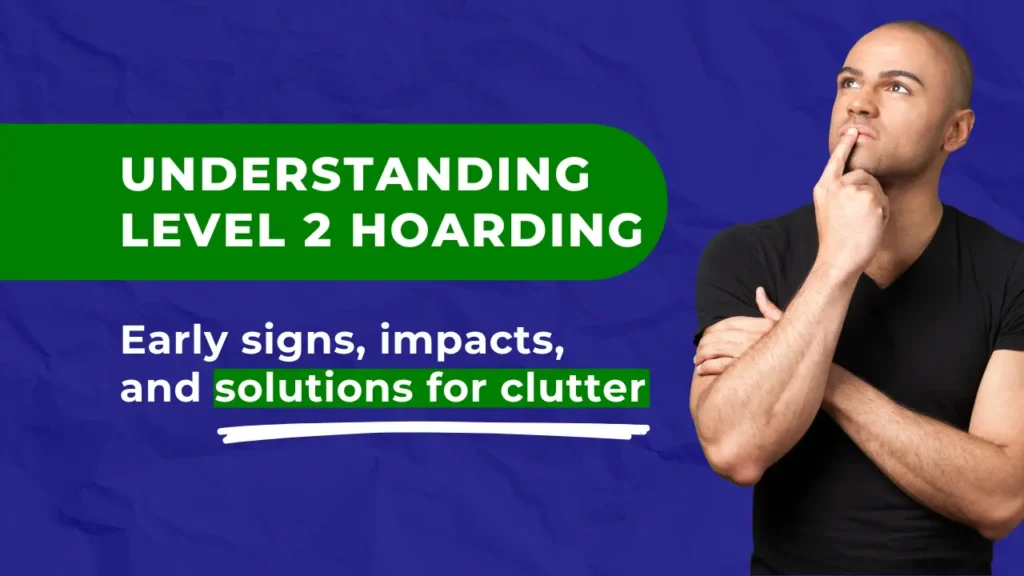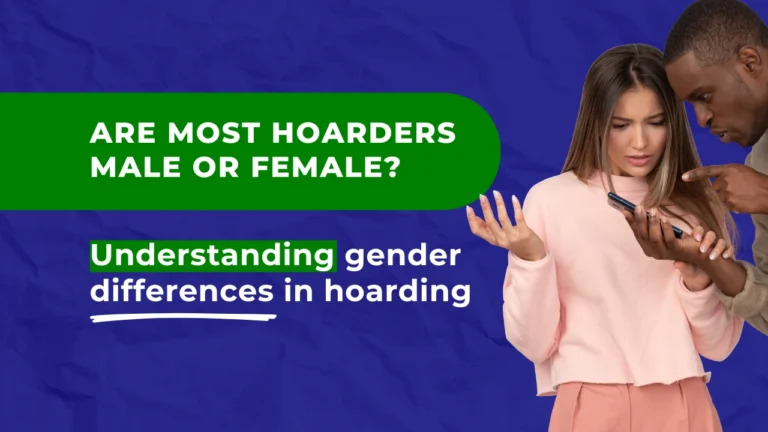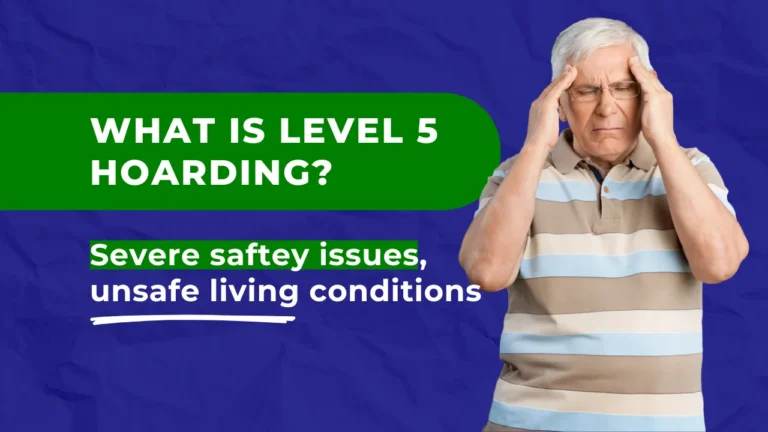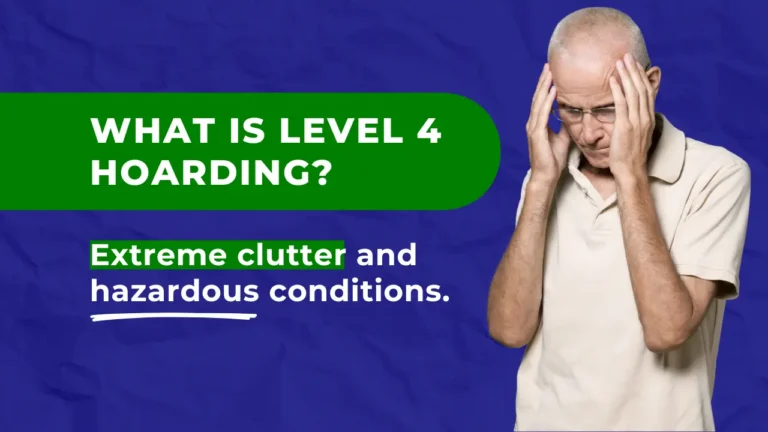You decide to visit your sister in Hamilton after her recent divorce. You haven’t seen her in a while, and as you walk through the door of her apartment near Gage Park, you notice things are not quite right.
To begin with, the clutter is more than you’ve ever seen before. As you move carefully through the living room, you notice stacks of newspapers on the coffee table, unopened Amazon packages in the hall closet, and dirty dishes piled up in the kitchen sink. You also see that your sister’s T-shirt and jeans are loaded with cat hair from the huge tabby glaring at you from under the table.
“Hey, Sara, are you okay?” you ask, trying to keep your concern out of your voice. You suspected that divorce would take its toll, but you didn’t expect this level of disorder from your normally fastidious sister.
“I’m fine,” she replies before looking away quickly. A faint flush reddens her cheeks. “Just haven’t had the energy to clean up lately.”
This scenario is all too familiar for those dealing with Level 2 hoarding. It’s a situation where clutter starts to take over the home, making daily living increasingly difficult. While your sister’s home may not yet be eligible for a spot on Hoarders, without intervention it may be a matter of time. In this blog, we outline everything you need to know about Level 2 hoarding and how hoarding remediation services can help.
Understanding Level 2 Hoarding
There are 5 stages of hoarding and Level 2 hoarding is the second least severe category on the Clutter-Hoarding Scale, which was developed by the Institute for Challenging Disorganization (ICD). (This scale evaluates the condition of the property rather than diagnosing psychological aspects.) At this stage, individuals begin to show noticeable clutter that starts to impact their daily lives. As the mess and accumulation become harder to conceal, they become guarded about their living conditions.
Unlike Level 1 hoarders, who typically have minimal clutter that doesn’t affect the home’s liveability, Level 2 hoarders accumulate mild clutter that starts to impede living spaces and affect daily routines. However, because the disorder isn’t severe at this point, you may be tempted to ignore it and hope that the person soon becomes motivated to clean everything themselves. Unfortunately, this isn’t always what happens.
What Does Level 2 Hoarding Look Like?
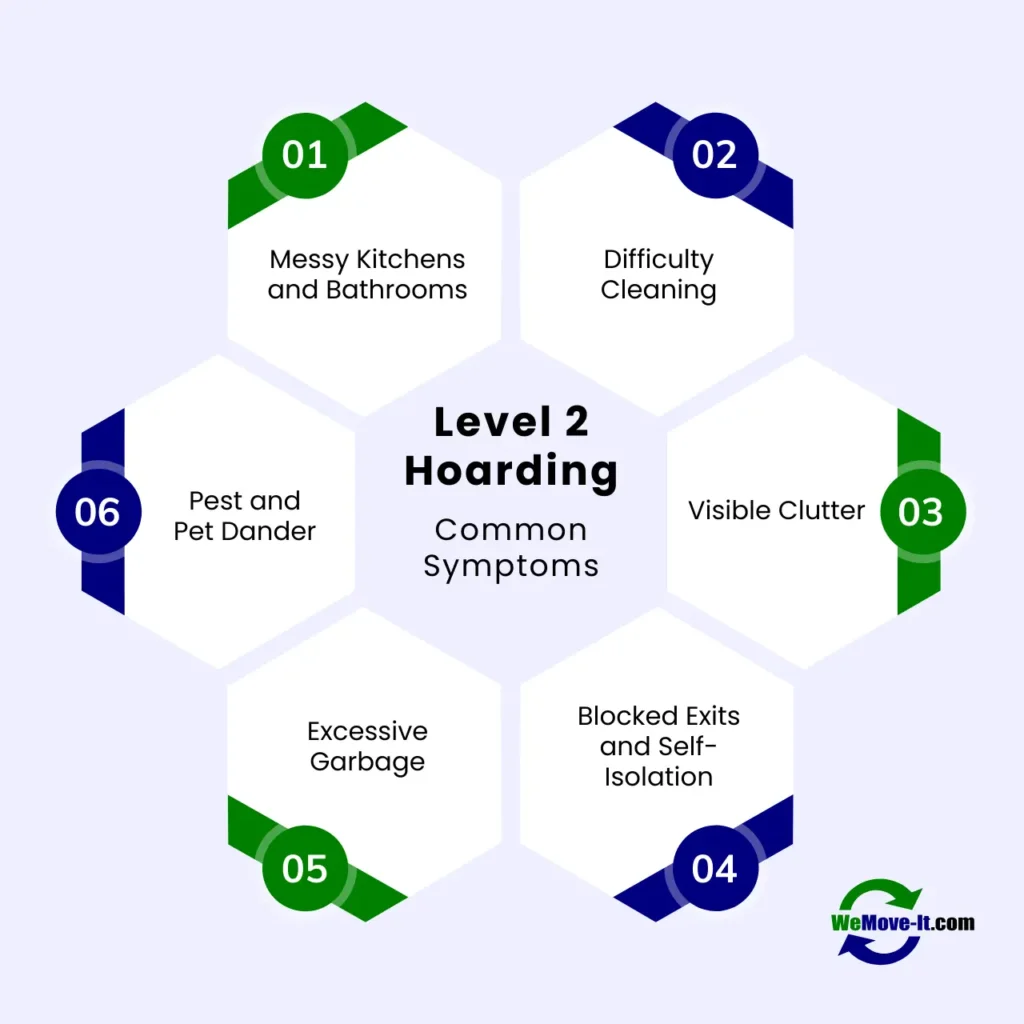
Level 2 hoarding is characterized by specific symptoms and behaviours. They include:
- Visible Clutter: Objects and collections begin to spill out of storage areas and cover surfaces. You might see stacks of newspapers, discarded clothing, or unopened packages cluttering tables, countertops, and floors. The clutter is definitely at Level 2 noticeable and starts to interfere with the normal use of living spaces.
- Difficulty Cleaning: Housekeeping becomes difficult as items pile up, making it hard to dust, vacuum, or clean regularly. This can lead to accumulation of dirt and grime in various parts of the home.
- Messy Kitchens and Bathrooms: These areas may have issues with light mildew, dirty dishes, and blocked surfaces. In the kitchen, for example, you might find counters filled with unwashed dishes, expired food in the refrigerator, and cluttered cooking areas. Bathrooms may have soap scum, mold in the grout, and personal hygiene products scattered around.
- Blocked Exits: An exit may be obstructed by clutter, posing a safety risk. For instance, a backdoor or a secondary exit might be blocked by piles of boxes, bags, or other items, making it difficult to use in case of an emergency.
- Excessive Garbage: Garbage might not be taken out regularly, leading to overflowing bins both inside and outside the house. Trash could be found in inappropriate places, such as near beds or in hallways.
- Pest Populations: Clutter and garbage can provide a breeding ground for pests. You might notice insects in the kitchen and bathroom, or see droppings indicating the presence of mice or rats.
- Self-Isolation: Hoarders start to limit visitors and spend more time at home due to embarrassment. They may avoid inviting friends or family over because of the condition of their home, leading to social isolation and loneliness.
- Pet Dander and Excrement: If pets are present, their living areas may have uncleaned urine or piles of feces everywhere. Pet hair might also cover furniture, floors, and clothing, adding to overall untidiness.
Common behaviours associated with Level 2 hoarding include:
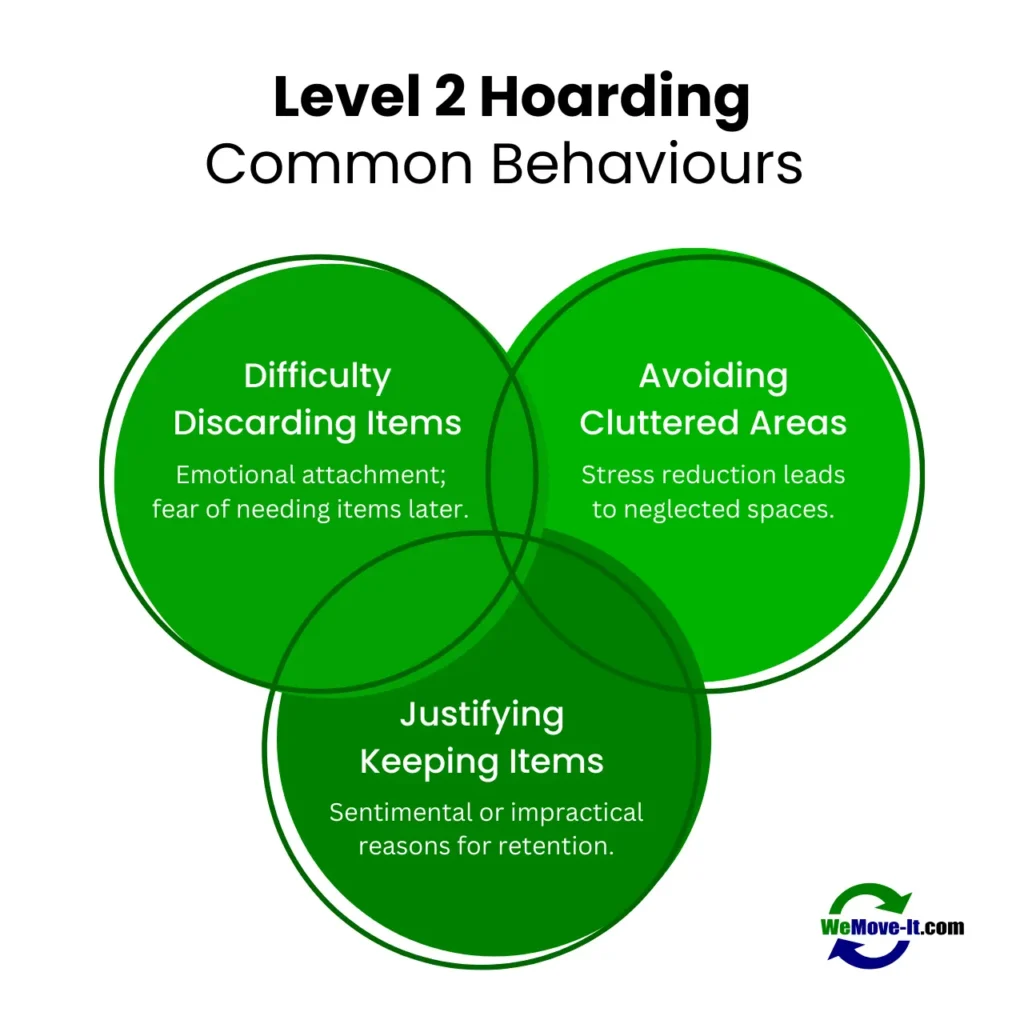
- Difficulty Discarding Items: Emotional attachment to belongings makes it hard to let go of things, even if they are no longer needed or even useful. Hoarders may hold onto items (even broken ones) for sentimental reasons or out of fear that they might need them in the future.
- Avoidance of Areas with Clutter: To reduce stress, hoarders might avoid parts of their home that are particularly cluttered. This can lead to a cycle where cluttered areas become more neglected and harder to manage.
- Justification for Keeping Items: Hoarders often have reasons for why they keep certain items, even if those reasons don’t make practical sense. They might believe that an item is irreplaceable or holds significant sentimental value.
Perhaps one of the most difficult aspects of Level 3 hoarding is the social and emotional impact it can have on the person. Now let’s take a look at how this disorder can be affecting people like Sara on the inside.
Social and Emotional Impact of Level 2 Hoarding
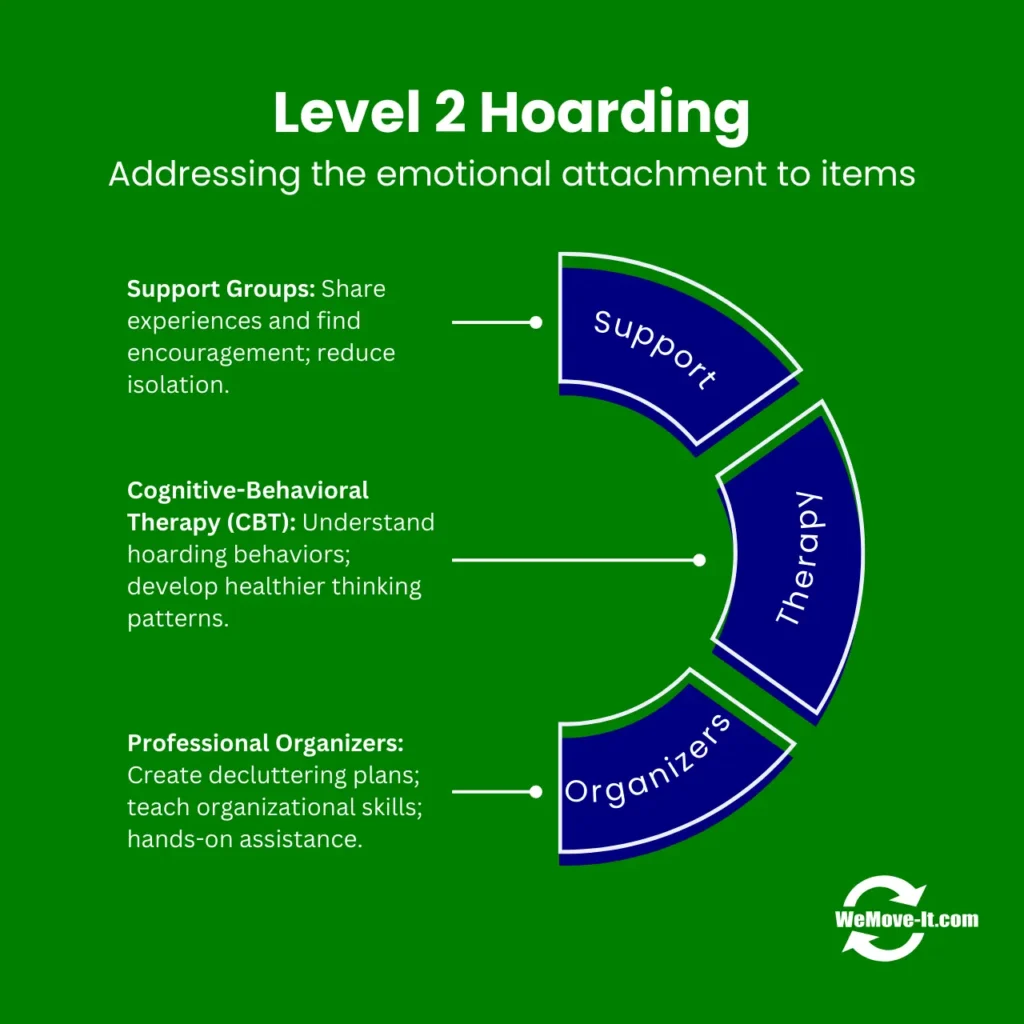
Level 2 hoarders often avoid social gatherings and limit contact with friends and family due to embarrassment. This isolation can worsen feelings of loneliness and depression and create a cycle that further entrenches hoarding behaviours. Family members and friends may also express frustration or confusion over the hoarder’s inability to part with seemingly unnecessary items, leading to strained relationships and arguments.
Addressing the emotional attachment to items is important for managing Level 2 hoarding. This attachment often stems from underlying mental health issues, such as anxiety or depression. The clutter serves as a comfort or security blanket, making the thought of parting with items nearly unbearable.
Ways to address this attachment include:
- Cognitive-Behavioral Therapy (CBT): This type of therapy helps the person understand the reasons behind their hoarding behaviors and develop healthier ways of thinking and behaving. Therapists work with hoarders to reframe their thoughts about their possessions and reduce the emotional hold these items have.
- Support Groups: Joining a support group can provide a safe space to share experiences and receive encouragement from others facing similar challenges. These groups can reduce the sense of isolation by connecting individuals with peers who understand their struggles.
- Professional Organizers: These experts can help create a manageable plan for reducing clutter and teach organizational skills that prevent future accumulation. Professional organizers also provide hands-on assistance, making the difficult task of decluttering more approachable.
While family and friends can offer emotional support and practical help, it’s important that they understand the challenges of hoarding and approach the situation without judgment. Encouraging open communication about feelings and challenges can make relationships stronger and provide a solid support network.
Best Strategies for Decluttering and Organizing
The steps help make decluttering and organizing more manageable and less overwhelming, leading to a more organized and livable space.
- Sorting: Begin by categorizing items into keep, donate, and discard piles. Items in the “keep” pile should be necessary or hold significant value. The “donate” pile can include items in good condition but no longer needed. The “discard” pile is for broken, expired, or unusable items.
- Incremental Steps: Tackle one area or room at a time to avoid feeling overwhelmed. Start with a small, manageable space, such as a drawer or a corner of a room, and gradually move to larger areas as you build momentum. This step-by-step approach prevents burnout and makes the task seem less daunting.
- Storage Solutions: Use bins, shelves, and organizers to manage the remaining items. Clear plastic bins can be useful for visibility, while labeled shelves can make finding items easier.
Set aside time each week for decluttering and organizing. This can be a specific day or a short daily routine to address clutter before it accumulates. Regular maintenance helps prevent small messes from becoming overwhelming problems, but if you have a lot of demands on your time, consider seeking help from professional organizers who can help you create and maintain a more organized and functional living space.
Need Help with Hoarder Cleanup? Contact WeMove-It.com!
Level 2 hoarding, while comparatively mild, can still prevent someone from enjoying full use of their home. If you or a loved one is struggling with hoarding behaviours, consider seeking professional help with cleanup.
WeMove-It.com offers specialized hoarding cleanup services across Hamilton, Burlington, Oakville, Mississauga, and Toronto. Our team understands the sensitive nature of hoarding and approaches every home with care and respect. By prioritizing the privacy and comfort of our clients, we make the process as stress-free as possible. If you have questions or would like a free estimate, call (844) 866-8348 today.
